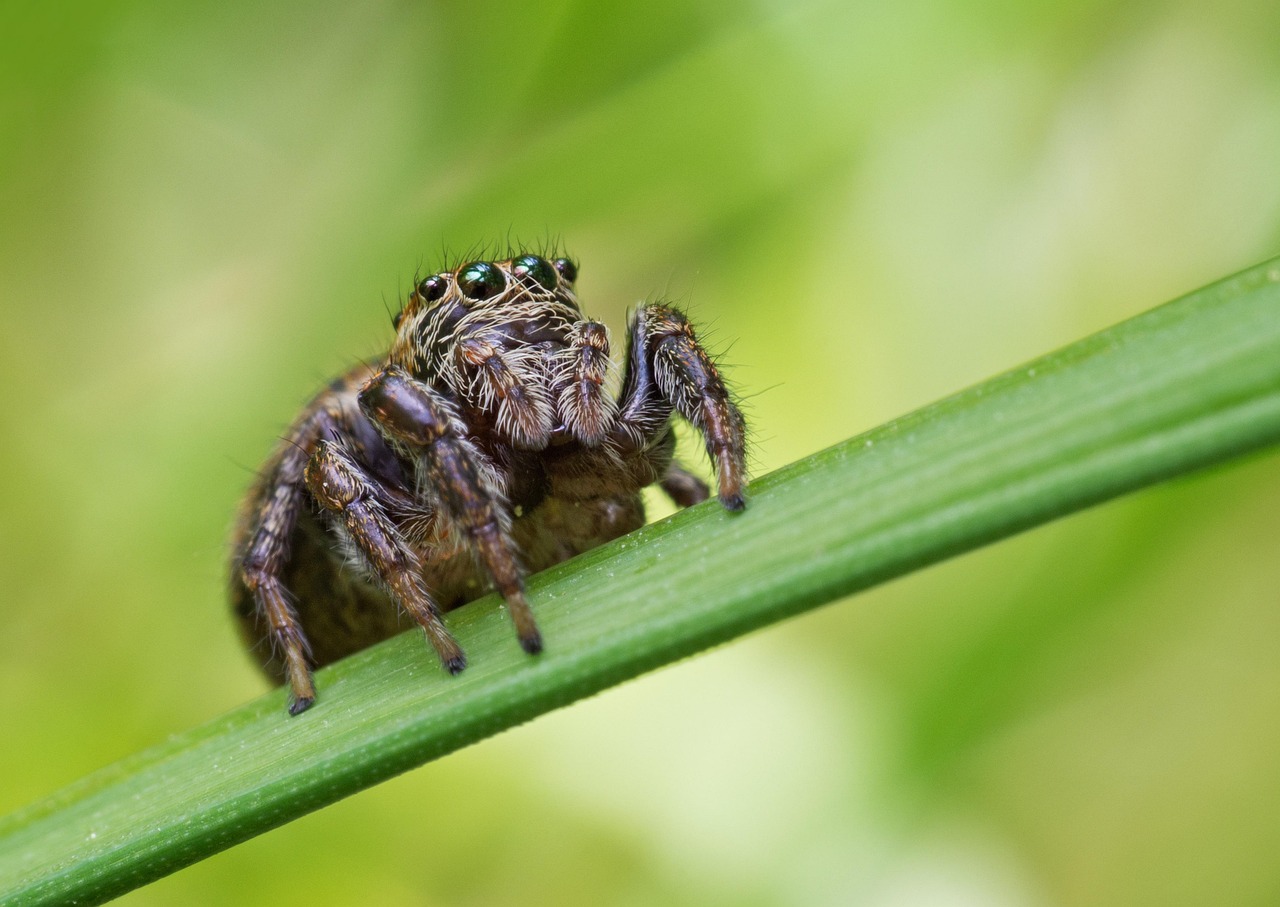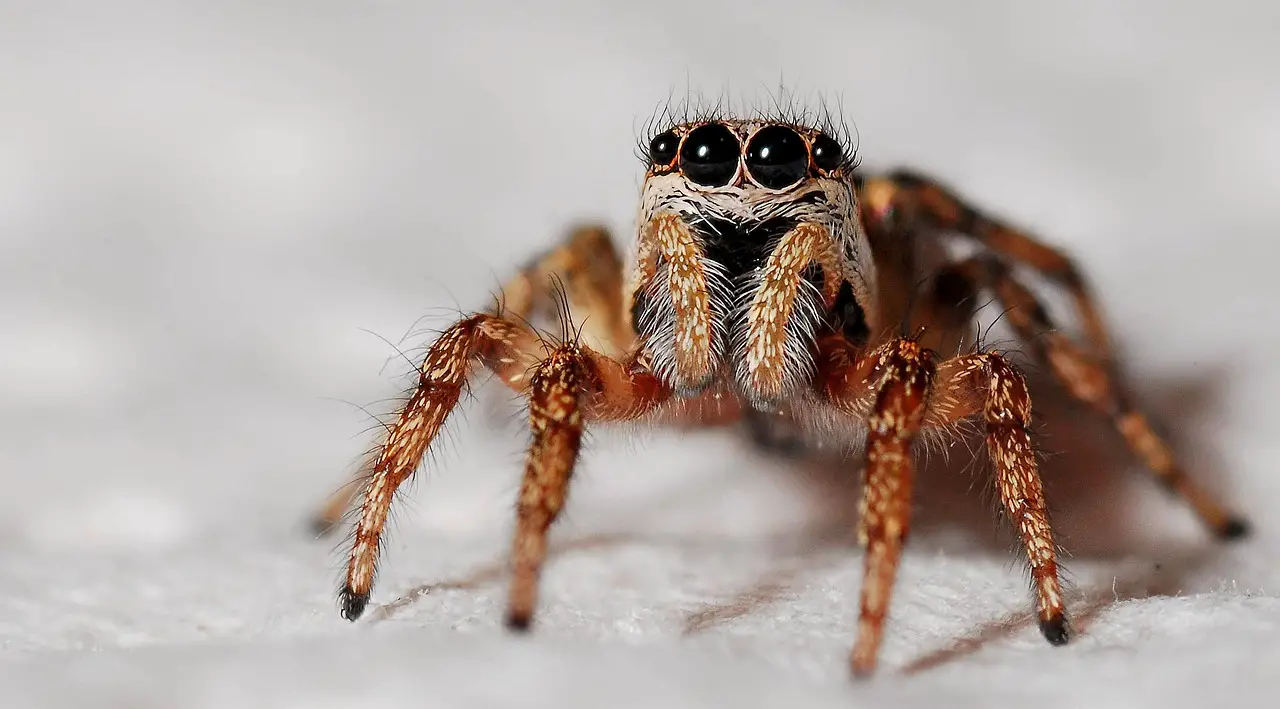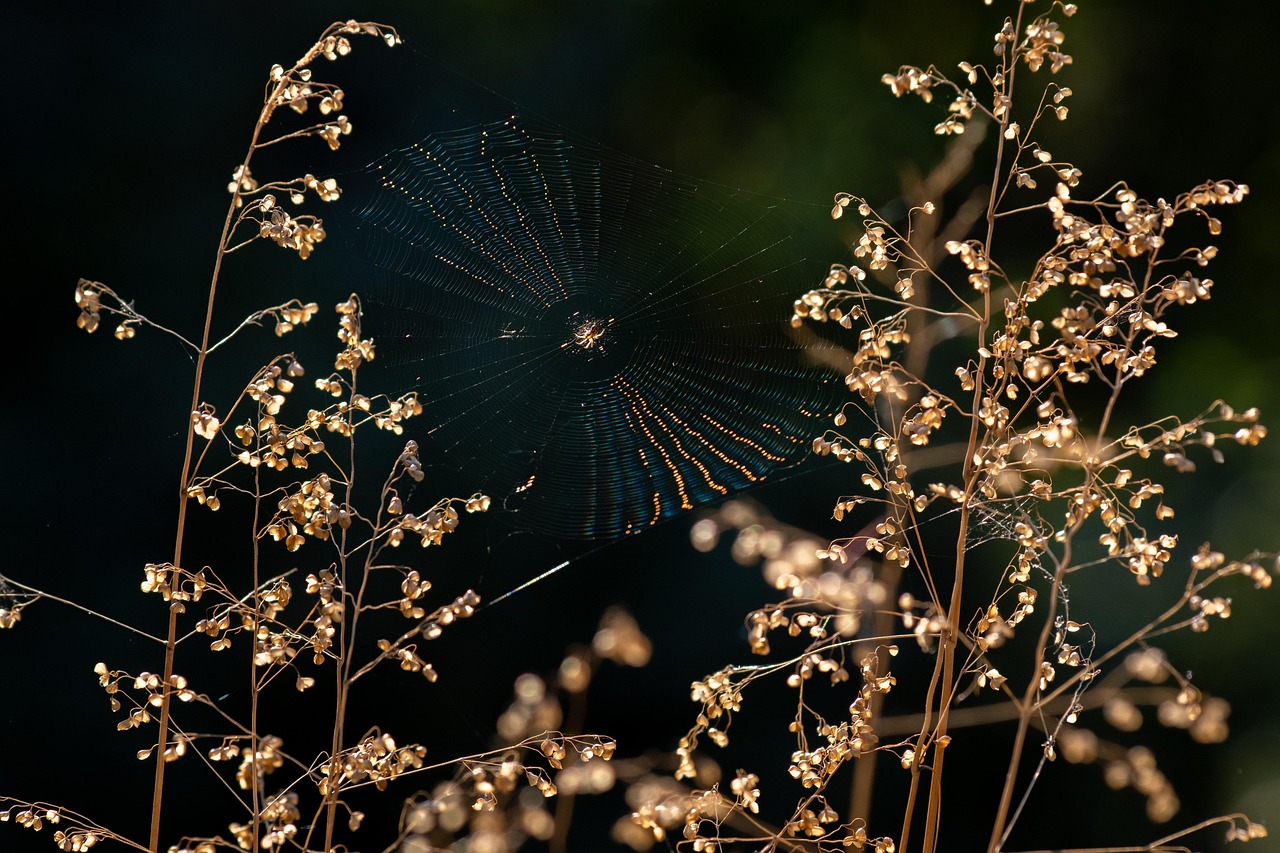California is home to a rich diversity of wildlife, and this includes a fascinating array of spiders. Spiders are often misunderstood creatures, viewed with fear and suspicion. However, they play a crucial role in maintaining ecological balance. In California, the variety of habitats provides an ideal environment for many species of arachnids. From the coastal regions to the deserts, the Golden State hosts spiders that vary greatly in size, color, and behavior.
Spiders belong to the class Arachnida, which also includes scorpions, ticks, and mites. They are distinguished by their eight legs and two body segments: the cephalothorax and the abdomen. California is home to both native and non-native spider species. Some are harmless to humans, while others may pose a risk. Understanding these creatures can help demystify them and highlight their importance in our ecosystems.

Here are some interesting facts about spiders found in California:
| Fact | Description |
|---|---|
| Species Diversity | California is home to over 1,000 spider species. |
| Habitat Variety | Spiders thrive in various habitats including forests, deserts, and urban areas. |
| Diet | Most spiders are carnivorous and primarily feed on insects. |
| Silk Production | Spiders can produce silk for webs, egg sacs, and wrapping prey. |
Common Spiders of California
In this section, we will explore some of the most common spider species you may encounter in California. Each species has unique characteristics that make it interesting to study.
Western Black Widow (Latrodectus hesperus)
The Western Black Widow is one of the most recognized spiders in California. It is easily identifiable by its glossy black body and the distinctive red hourglass marking on the underside of its abdomen. Found in dark, sheltered locations, such as basements and garages, this spider is known for its venomous bite.
California Wolf Spider (Lycosidae)
The California Wolf Spider is a robust and agile hunter. Unlike many other spiders, it does not spin webs to catch its prey. Instead, it actively hunts down insects during the night. These spiders can be found in grasslands and gardens, often hiding under rocks or debris.
House Spider (Parasteatoda tepidariorum)
The House Spider is commonly found indoors throughout California. This small spider is often mistaken for the more dangerous Brown Recluse due to its similar appearance. However, it poses little threat to humans. House Spiders create tangled webs in corners and crevices where they trap unsuspecting insects.
Orb-Weaver Spiders (Araneidae)
Orb-Weaver Spiders are well-known for their intricate, wheel-shaped webs. These spiders can be found in gardens or forests during warmer months. They come in various colors and sizes. Their ability to spin beautiful webs makes them a favorite among nature enthusiasts.
Each of these species contributes to the biodiversity of California’s ecosystems. By learning about them, we can appreciate their role in pest control and environmental health.
Identifying California Spiders
Understanding how to identify different spider species is crucial for appreciating their roles in the ecosystem. Many spiders share similar characteristics, which may lead to confusion. Here are some key features to consider when identifying California spiders:
- Body Shape: Spiders can have various body shapes, from slender and elongated to robust and round.
- Coloration: Many spiders exhibit diverse colors, patterns, and markings that serve as camouflage or warning signals.
- Web Type: Different spiders spin different types of webs. Observing the shape and structure can provide clues about the species.
- Behavior: Some spiders are web builders, while others are active hunters. Their hunting strategy can help with identification.
Common Misconceptions about Spiders
Spiders often evoke fear due to common misconceptions. Here are a few beliefs that are not entirely accurate:
- All Spiders are Dangerous: While some spiders, such as the Black Widow, can be harmful, the vast majority are harmless and even beneficial.
- Spiders Bite Humans Frequently: Spiders tend to avoid humans. They will only bite in self-defense if provoked.
- Spiders are Insects: Spiders are arachnids, not insects. They have distinct biological differences, including their eight legs and two body segments.
The Role of Spiders in Ecosystems

Spiders play a vital role in maintaining ecological balance. They are natural pest controllers, helping to regulate insect populations. Here are some specific contributions they make:
- Pest Control: Spiders consume a wide variety of insects, including flies, mosquitoes, and agricultural pests. This helps reduce the need for chemical pesticides.
- Food Source: Many birds and other wildlife rely on spiders as a food source, contributing to the food web.
- Soil Health: By controlling insect populations, spiders contribute to healthier soil conditions, promoting plant growth.
The Benefits of Spiders to Humans
While many people fear spiders, they offer several benefits that are often overlooked:
- Natural Pest Management: By keeping pest populations in check, spiders can help farmers reduce crop damage without harmful chemicals.
- Medical Research: Spider venom contains compounds that may lead to advancements in medicine, including pain relief and treatments for various diseases.
- Biodiversity Indicators: The presence of diverse spider species can indicate a healthy environment and ecosystem.
Caution: Handling Spiders

While most spiders are harmless, it is important to exercise caution when encountering them. Here are some tips for safe interactions:
- Avoid Disturbance: If you see a spider, it is best to leave it alone. They play an essential role in controlling pests.
- Use a Container for Relocation: If you need to move a spider outside, gently coax it into a container and release it away from your home.
- Educate Yourself: Learn more about local spider species to understand which are harmless and which may require caution.
Understanding and respecting spiders can lead to a greater appreciation for the natural world in California. Their presence is not only fascinating but also essential for maintaining healthy ecosystems.

Spider Habitats in California
California’s diverse landscapes provide a wide range of habitats for various spider species. From coastal areas to mountain ranges, each region supports unique communities of arachnids. Understanding these habitats helps us appreciate how spiders adapt to their environments.
Coastal Regions
The coastal areas of California are characterized by sandy beaches, rocky shorelines, and salt marshes. Here, spiders like the Coastal Wolf Spider can be found. This species is adept at navigating sandy dunes and is often seen hunting for small insects.
Forests and Woodlands
California’s forests, including the famous redwood and sequoia groves, are home to many spider species. The dense foliage provides ample hiding spots and hunting grounds. Notable species in these areas include:
- Orb-Weaver Spiders: Known for their beautiful webs, they thrive in the forest canopy where they catch insects drawn to the trees.
- Jumping Spiders: These small, agile hunters are often found on tree trunks and leaves, actively searching for prey rather than waiting in webs.
Desert Regions
The desert areas of California, such as the Mojave and Sonoran deserts, present unique challenges for spiders. Here, species like the Desert Tarantula have adapted to survive in arid conditions. These spiders often create burrows to escape the heat and hunt nocturnally.
Urban Environments
Even urban areas are not devoid of spider life. Many species have adapted to city living, finding homes in gardens, parks, and even inside buildings. Common urban spiders include:
- House Spiders: Frequently found indoors, they thrive in human environments by preying on common household pests.
- Garden Spiders: These spiders are often spotted in residential gardens, creating intricate webs to catch flying insects.
The Life Cycle of California Spiders
The life cycle of a spider generally consists of several stages: egg, juvenile (or instar), and adult. Understanding these stages can provide insights into their behavior and habitat needs.
Egg Stage
Female spiders lay eggs in sacs made from silk. These sacs can contain dozens or even hundreds of eggs, depending on the species. The egg sac is often hidden to protect the young from predators.
Juvenile Stage
Once the eggs hatch, spiderlings emerge. They are miniature versions of adults but are more vulnerable to predators. During this stage, they may disperse to find their own territories. Some juvenile spiders use silk threads to balloon away and settle in new locations.
Adult Stage
As spiders mature, they will undergo several molts, shedding their exoskeletons as they grow. Adult spiders are fully developed and capable of reproduction. Most species have a short lifespan, typically ranging from one to two years.
Spider Behavior and Adaptations
California spiders exhibit a wide range of behaviors that help them survive in different environments. Here are some notable adaptations:
- Camo and Coloration: Many spiders have evolved colors and patterns that blend into their surroundings, making them less visible to predators.
- Web Construction: Different species build various types of webs suited to their hunting strategies, such as orb webs for trapping flying insects or funnel webs for ambush tactics.
- Nocturnal Activity: Many spiders are primarily nocturnal, which helps them avoid daytime predators while taking advantage of the abundance of insects active at night.
These behaviors and adaptations play a significant role in the survival of spiders across California’s diverse ecosystems.
Conservation of Spiders in California
As important as spiders are to the ecosystem, they face numerous threats. Habitat loss, pesticide use, and climate change are significant challenges impacting their populations. Conservation efforts are essential to protect these vital arachnids and their habitats.
Threats to Spider Populations
Several factors contribute to the decline of spider populations in California:
- Habitat Destruction: Urban development and agriculture often lead to the destruction of natural habitats, leaving spiders with fewer places to live and hunt.
- Pesticide Use: The widespread use of chemical pesticides can kill spiders directly or reduce their food supply by eliminating the insects they prey upon.
- Climate Change: Changes in temperature and precipitation patterns can alter ecosystems, potentially disrupting the delicate balance in which spiders thrive.
Conservation Efforts
To safeguard spider populations, various conservation initiatives focus on habitat preservation and public education:
- Preserving Natural Habitats: Organizations are working to protect and restore habitats that are crucial for spider survival. This includes maintaining green spaces in urban areas.
- Public Awareness Campaigns: Educating the public about the importance of spiders can help reduce fear and promote coexistence. Understanding their role in pest control is key.
- Research and Monitoring: Ongoing research helps scientists understand spider populations and their ecological roles, allowing for better conservation strategies.
Spider Watching: A Fun Activity
For those interested in observing these fascinating creatures, spider watching can be an enjoyable and educational activity. Here are some tips for engaging with spiders in a safe and respectful manner:
- Choose the Right Location: Visit natural areas such as parks, gardens, or forests where spiders are likely to thrive.
- Look for Webs: Observing the intricate webs of orb-weaver spiders can be particularly rewarding. Early morning is a great time to see dew-covered webs glistening in the sunlight.
- Use a Magnifying Glass: A magnifying glass can enhance your observations, allowing you to appreciate the details of a spider’s body and web structure.
Final Thoughts
California’s spiders are more than just creepy crawlers; they are essential contributors to the environment. Their roles in pest control and ecological balance highlight their importance in maintaining healthy ecosystems. By understanding these creatures, we can learn to appreciate their existence rather than fear them.
Conservation efforts aimed at protecting spiders and their habitats are crucial for sustaining biodiversity. Engaging in activities like spider watching can foster a deeper connection with nature, encouraging respect for all living creatures. By promoting awareness and taking actions to protect these arachnids, we ensure that future generations can also marvel at the incredible diversity of California’s wildlife.
Ultimately, recognizing the value of spiders helps cultivate a harmonious relationship with the natural world. Whether seen in gardens, forests, or even our homes, spiders remind us of the intricate web of life that surrounds us.
